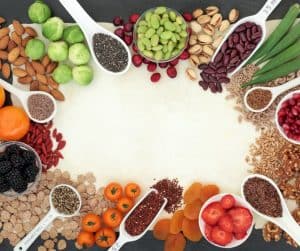
Have you ever heard of hepcidin? It’s worth understanding mainly if you are a female athlete or someone who suffers from iron deficiency anaemia.
Iron is an essential element for many biological processes. Too little iron can have many detrimental effects on your health and sports performance. We have previously discussed the impact iron deficiency and anaemia has on thyroid health and poor immunity. Excess iron can be toxic, so regulating iron levels are vital to a healthy, balanced body.
Hepcidin is an iron-regulating peptide hormone that’s produced in your liver. It works to control the delivery of iron to your blood from food through the lining of the intestines. It is the master regulator in iron metabolism and the balance between iron storage and the absorption better known as iron homeostasis. Hepcidin also tightly influences red blood cell production.
When hepcidin levels are unusually high, it reduces intestinal iron absorption and red blood cell production. Low hepcidin levels stimulate iron absorption, and iron supply to bone marrow and promote hemoglobin and red blood cell production. Iron deficiency is common among female athletes, and is much higher than their male counterparts. It is often cited as being a result of the menstrual cycle during premenopausal years. Depleted iron stores can have many adverse effects, including poor performance, low energy levels, and general well-being.
Some research has shown that active females with compromised iron possess an inherent protective mechanism once iron deficient. This adaptation allows the body to adjust to a reduced iron supply. It is proposed iron depletion may be a combination of exercise-induced losses and hepcidin accumulation.
Running is known to acutely increase hepcidin levels (peaking three hours post-exercise), therefore reducing iron absorption and recycling.
Timing iron supplementation to correlate with low hepcidin levels may enhance absorption and positively impact iron levels in the blood. In practical terms, if you exercise in the morning, you might consider taking your iron supplement straight after you exercise, before hepcidin rises.
Hundreds of athletes have used our handy anaemia quiz to help determine the likely risk of having low iron or anaemia. we encourage you to use this free tool if you have a history of iron deficiency or you are unsure if your iron stores may be declining.
Want to know more? Contact the Athlete Sanctuary to learn how we can support you further. Book an appointment here.
About the Author: Kate Smyth is a Sports naturopath, nutritionist and female-centric running coach. She is the founder of the Athlete Sanctuary- a holistic healthcare clinic for athletes of all levels and sporting codes. Kate has a thirst for knowledge with two bachelor’s and a master’s degree under her belt. She has been involved in sports for many decades and competed for Australia in the Commonwealth Games and Olympic Games marathons with a personal best time of 2 hours 28 minutes. For more information visit https://athletesanctuary.com.au/kate-smyth
References
Ganz, T. (2016). Hepcidin. Rinsho Ketsueki, 57(10), 1913-1917. DOI: 10.11406/rinketsu.57.1913.
Sim, M., Dawson, B., Landers, G., Trinder, D., & Peeling, P. (2014). Iron regulation in athletes: exploring the menstrual cycle and effects of different exercise modalities on hepcidin production. International journal of sport nutrition and exercise metabolism, 24(2), 177-187.https://pubmed.ncbi.nlm.nih.gov/24225901/
Alfaro-Magallanes, V. M., Benito, P. J., Rael, B., Barba-Moreno, L., Romero-Parra, N., Cupeiro, R. FEMME Study Group. (2020). Menopause Delays the Typical Recovery of Pre-Exercise Hepcidin Levels after High-Intensity Interval Running Exercise in Endurance-Trained Women. Nutrients, 12(12), 3866. https://pubmed.ncbi.nlm.nih.gov/33348847/
Nirengi, S., Taniguchi, H., Ishibashi, A., Fujibayashi, M., Akiyama, N., Kotani, K., & Sakane, N. (2021). Comparisons between serum levels of hepcidin and leptin in male college-level endurance runners and sprinters. Frontiers in Nutrition, 8. https://pubmed.ncbi.nlm.nih.gov/34136516/
Pagani, A., Nai, A., Silvestri, L., & Camaschella, C. (2019). Hepcidin and anemia: a tight relationship. Frontiers in physiology, 1294. https://www.frontiersin.org/articles/10.3389/fphys.2019.01294/full
Sim, M., Dawson, B., Landers, G., Trinder, D., & Peeling, P. (2014). Iron regulation in athletes: exploring the menstrual cycle and effects of different exercise modalities on hepcidin production. International journal of sports nutrition and exercise metabolism, 24(2), 177-187. https://pubmed.ncbi.nlm.nih.gov/24225901/[/vc_column_text][/vc_column][/vc_row]

Kate Smyth is a sports naturopath, nutritionist and female-centric running coach. She is the founder of the Athlete Sanctuary – a holistic healthcare clinic for athletes of all levels and sporting codes.
Kate has a thirst for knowledge, with two bachelor’s and a master’s degree under her belt. She has been involved in sports for many decades and competed for Australia in the Commonwealth Games and Olympic Games marathons with a personal best time of 2 hours 28 minutes.
Targeted naturopathic care, nutrition and holistic coaching for active individuals.
Normatec Recovery systems- hire and purchase
Birregurra -28-30 Strachan Street,
Torquay- 20 Cantala Drive, Jan Juc
TELEHEALTH – Aus wide, New Zealand, Canada and globally (except US)
Melbourne and Ballarat clinics are currently online